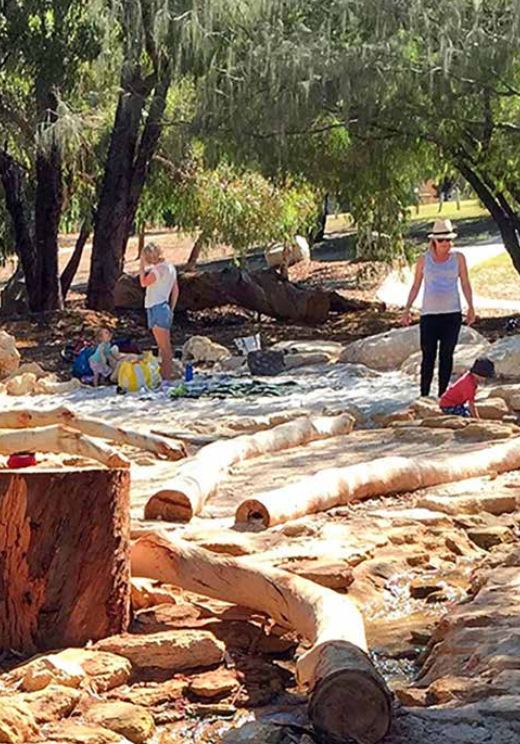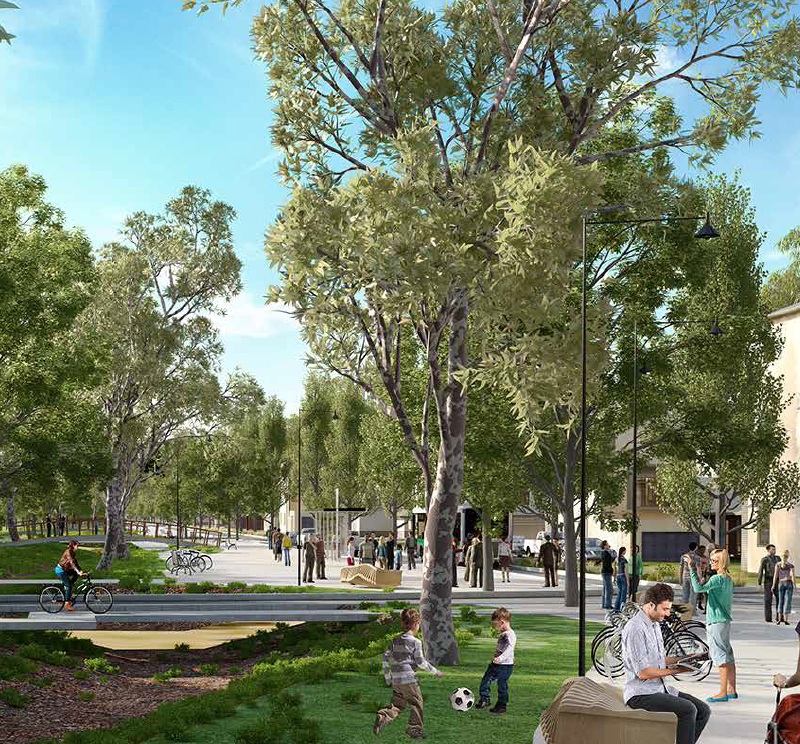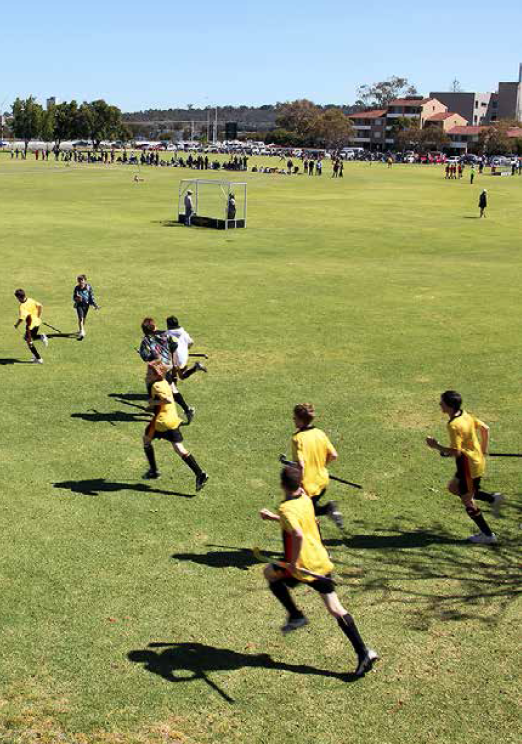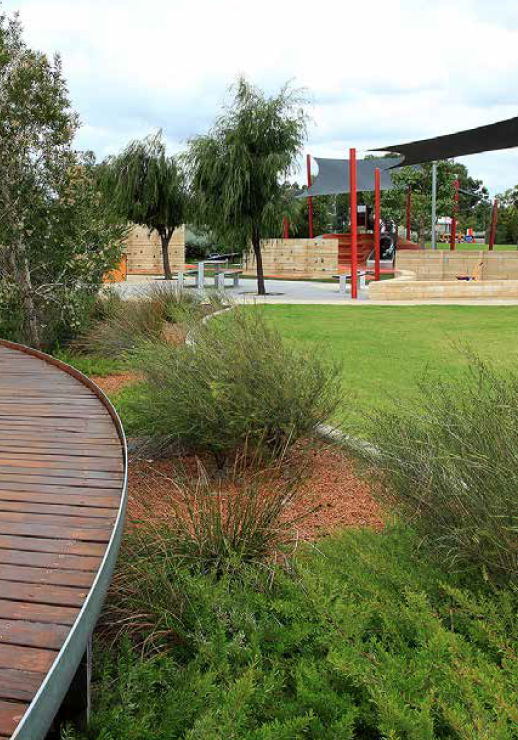Wanju Vegetation Master Plan
Testing the CRCWSC Design Platform to inform structure plan vegetation requirements to manage urban heat
Contact
About the project
This interdisciplinary project aims to encourage industry to adopt research outcomes early in two ways. First, it provides proof-of-concept for using CRCWSC research tools. Second, it facilitates learning opportunities for project partners and a wider audience.
It is a collaboration between the WA Department of Water and Environmental Regulation (DWER), the WA Department of Planning, Lands and Heritage, the Shire of Dardanup and the CRCWSC.
Project aim
- be used to justify (i) the importance of water and vegetation in urban areas to manage thermal heat comfort, and (ii) the need to preserve land to deliver this outcome successfully
- test different typologies and inform development of vegetation requirements, which will then be delivered through the planning and development process to provide optimal outcomes
- be used efficiently by stakeholders at a range of scales and locations to generate relevant data to inform planning decisions.
The method
Project progress
- Draft Wanju District Structure Plan released for public comment
- The CRCWSC developed the Scenario Platform (formerly the WSC Toolkit), which included a Land Surface Temperature model. The model is available as a beta version and has been previously tested in several research applications.
- The CRCWSC developed the Design Platform, which can be used to calculate land surface temperature as well as the spatial and temporal variation of air temperature using the newly integrated TARGET model. The model has been tested for a Precinct Structure Plan in Melbourne, but requires further refinement.
- Conversations begin between the CRCWSC and DWER to explore using the Design Platform to inform and strengthen the Wanju Vegetation Master Plan, and the related principles in the District Structure Plan.
- The CRCWSC is testing and refining the Design Platform using Master Plan GIS inputs from DWER. Once this work is complete, DWER will receive the tool, along with guidance material and ongoing support to test different scenarios through the master planning process.
- DWER facilitated site visits for the Department of Planning, Lands and Heritage and the Shire of Dardanup to other local government areas. These field trips identified the successes and lessons from delivering multiple use corridors that balance vegetation, water, microclimate, bushfire and maintenance in different urban typologies. Follow up workshops have allowed stakeholders to develop different typologies and test the initial rules for the Wanju Vegetation Master Plan using the Design Platform.
Coming soon
Project stats
Location
Western Australia, Australia
Status
In progress
Research project
Tools and Products (TAP) test project
Participants
- Department of Water and Environmental Regulation (WA)
- Department of Planning, Lands and Heritage (WA)
- Shire of Dardanup
- CRCWSC
Who might this interest?
The outcomes of the work may interest:
- State Governments
- Urban planners and designers
- Local Councils
- Developers
- Landscape architects
- Water engineers
Evaluation and Learning Framework Outcomes
| CRCWSC evaluation questions | Response |
|
This project will help to refine the Design Platform (currently being developed). It will also demonstrate the value of this tool in developing planning documents that will enable the onground delivery of integrated water and vegetation outcomes to provide urban cooling and other benefits (such as ecosystem services). It will demonstrate this outcome using interdisciplinary research between the CRCWSC and DWER. |
|
The CRCWSC and DWER have a close working relationship, which ensures the interdisciplinary research is transparent and well communicated between the parties. The CRCWSC will provide ongoing support as DWER tests the tool. |
|
DWER:
CRCWSC:
|
|
To be addressed at mid-project review |
|
To be addressed at mid-project review |
| CRCWSC evaluation questions | Response |
|
|
|
Using the Design Platform (developed by the CRCWSC using the latest research) strengthens the justification for integrated vegetation and water outcomes in urban planning processes. The inception meeting between the project stakeholders confirmed project objectives and progress (using the evaluation and learning framework). |
|
Information about the project will be available on the CRCWSC website and sent to participants via the CRCWSC newsletter. |
|
To be addressed at mid-project review |
|
To be addressed at mid-project review |
| CRCWSC evaluation questions | Response |
|
To be addressed at mid-project review |
|
To be addressed at mid-project review |
| CRCWSC evaluation questions | Response |
|
Too early to understand this yet |
|
None to date |
|
The intended outcomes of this project include helping DWER to develop robust vegetation and water requirements in the Wanju Vegetation Master Plan, and illustrating how the tool can be used in similar planning processes in other locations and scales. |
|
To be addressed at project completion |
|
To be addressed at project completion |
|
To be addressed at project completion |
| CRCWSC evaluation questions | Response |
|
To be addressed at mid-project review |
Links to related work
Interested in this solution?
We partner with small and large companies, government and industry in Australia and around the world.






Comments